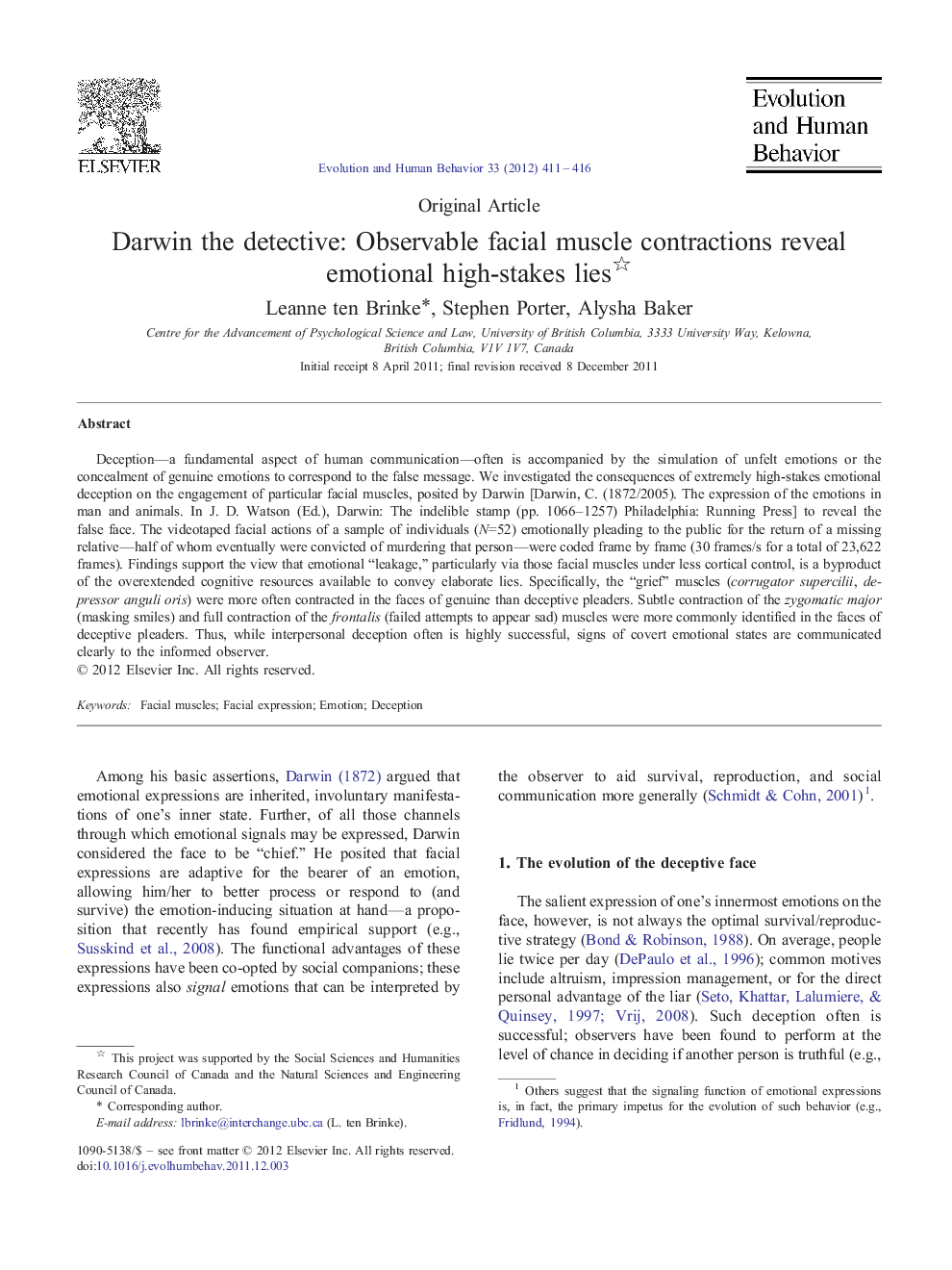| کد مقاله | کد نشریه | سال انتشار | مقاله انگلیسی | نسخه تمام متن |
|---|---|---|---|---|
| 943385 | 925463 | 2012 | 6 صفحه PDF | دانلود رایگان |

Deception—a fundamental aspect of human communication—often is accompanied by the simulation of unfelt emotions or the concealment of genuine emotions to correspond to the false message. We investigated the consequences of extremely high-stakes emotional deception on the engagement of particular facial muscles, posited by Darwin [Darwin, C. (1872/2005). The expression of the emotions in man and animals. In J. D. Watson (Ed.), Darwin: The indelible stamp (pp. 1066–1257) Philadelphia: Running Press] to reveal the false face. The videotaped facial actions of a sample of individuals (N=52) emotionally pleading to the public for the return of a missing relative—half of whom eventually were convicted of murdering that person—were coded frame by frame (30 frames/s for a total of 23,622 frames). Findings support the view that emotional “leakage,” particularly via those facial muscles under less cortical control, is a byproduct of the overextended cognitive resources available to convey elaborate lies. Specifically, the “grief” muscles (corrugator supercilii, depressor anguli oris) were more often contracted in the faces of genuine than deceptive pleaders. Subtle contraction of the zygomatic major (masking smiles) and full contraction of the frontalis (failed attempts to appear sad) muscles were more commonly identified in the faces of deceptive pleaders. Thus, while interpersonal deception often is highly successful, signs of covert emotional states are communicated clearly to the informed observer.
Journal: Evolution and Human Behavior - Volume 33, Issue 4, July 2012, Pages 411–416